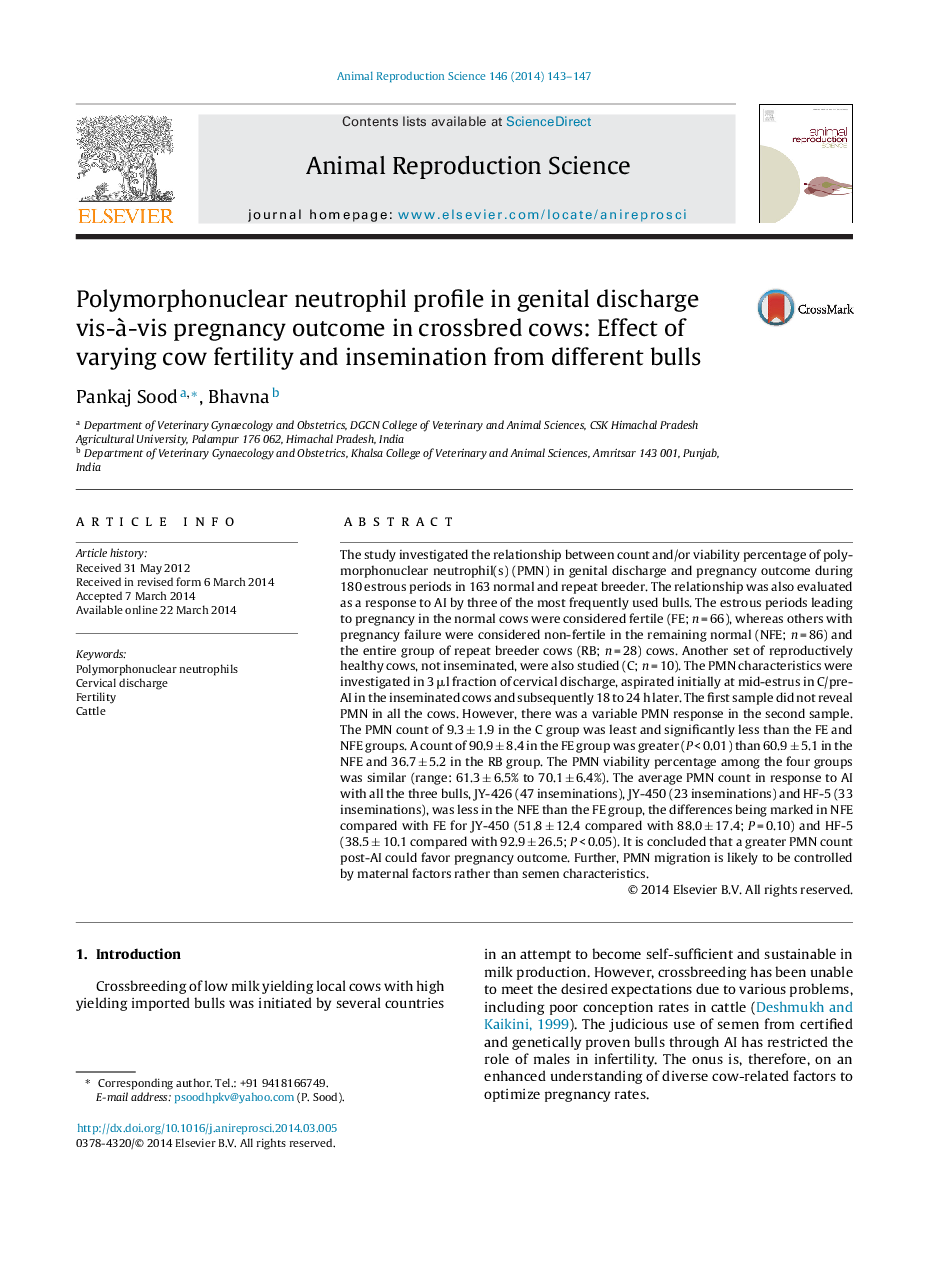| کد مقاله | کد نشریه | سال انتشار | مقاله انگلیسی | نسخه تمام متن |
|---|---|---|---|---|
| 8404880 | 1544736 | 2014 | 5 صفحه PDF | دانلود رایگان |
عنوان انگلیسی مقاله ISI
Polymorphonuclear neutrophil profile in genital discharge vis-Ã -vis pregnancy outcome in crossbred cows: Effect of varying cow fertility and insemination from different bulls
دانلود مقاله + سفارش ترجمه
دانلود مقاله ISI انگلیسی
رایگان برای ایرانیان
کلمات کلیدی
موضوعات مرتبط
علوم زیستی و بیوفناوری
علوم کشاورزی و بیولوژیک
علوم دامی و جانورشناسی
پیش نمایش صفحه اول مقاله

چکیده انگلیسی
The study investigated the relationship between count and/or viability percentage of polymorphonuclear neutrophil(s) (PMN) in genital discharge and pregnancy outcome during 180 estrous periods in 163 normal and repeat breeder. The relationship was also evaluated as a response to AI by three of the most frequently used bulls. The estrous periods leading to pregnancy in the normal cows were considered fertile (FE; n = 66), whereas others with pregnancy failure were considered non-fertile in the remaining normal (NFE; n = 86) and the entire group of repeat breeder cows (RB; n = 28) cows. Another set of reproductively healthy cows, not inseminated, were also studied (C; n = 10). The PMN characteristics were investigated in 3 μl fraction of cervical discharge, aspirated initially at mid-estrus in C/pre-AI in the inseminated cows and subsequently 18 to 24 h later. The first sample did not reveal PMN in all the cows. However, there was a variable PMN response in the second sample. The PMN count of 9.3 ± 1.9 in the C group was least and significantly less than the FE and NFE groups. A count of 90.9 ± 8.4 in the FE group was greater (P < 0.01) than 60.9 ± 5.1 in the NFE and 36.7 ± 5.2 in the RB group. The PMN viability percentage among the four groups was similar (range: 61.3 ± 6.5% to 70.1 ± 6.4%). The average PMN count in response to AI with all the three bulls, JY-426 (47 inseminations), JY-450 (23 inseminations) and HF-5 (33 inseminations), was less in the NFE than the FE group, the differences being marked in NFE compared with FE for JY-450 (51.8 ± 12.4 compared with 88.0 ± 17.4; P = 0.10) and HF-5 (38.5 ± 10.1 compared with 92.9 ± 26.5; P < 0.05). It is concluded that a greater PMN count post-AI could favor pregnancy outcome. Further, PMN migration is likely to be controlled by maternal factors rather than semen characteristics.
ناشر
Database: Elsevier - ScienceDirect (ساینس دایرکت)
Journal: Animal Reproduction Science - Volume 146, Issues 3â4, May 2014, Pages 143-147
Journal: Animal Reproduction Science - Volume 146, Issues 3â4, May 2014, Pages 143-147
نویسندگان
Pankaj Sood, Bhavna Bhavna,